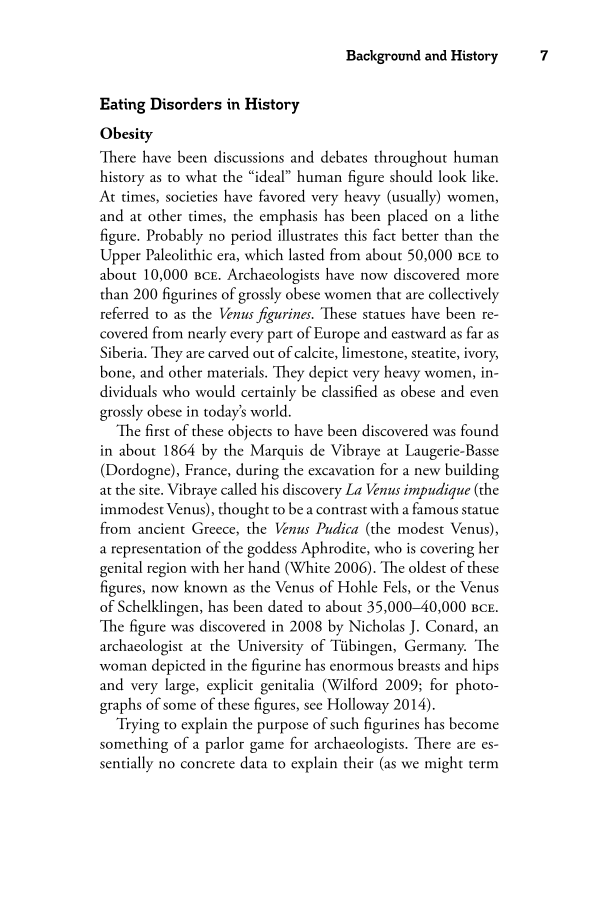Background and History 7 Eating Disorders in History Obesity Th ere have been discussions and debates throughout human history as to what the “ideal” human fi gure should look like. At times, societies have favored very heavy (usually) women, and at other times, the emphasis has been placed on a lithe fi gure. Probably no period illustrates this fact better than the Upper Paleolithic era, which lasted from about 50,000 bce to about 10,000 bce. Archaeologists have now discovered more than 200 fi gurines of grossly obese women that are collectively referred to as the Venus fi gurines . Th ese statues have been re- covered from nearly every part of Europe and eastward as far as Siberia. Th ey are carved out of calcite, limestone, steatite, ivory, bone, and other materials. Th ey depict very heavy women, in- dividuals who would certainly be classifi ed as obese and even grossly obese in today’s world. Th e fi rst of these objects to have been discovered was found in about 1864 by the Marquis de Vibraye at Laugerie-Basse (Dordogne), France, during the excavation for a new building at the site. Vibraye called his discovery La Venus impudique (the immodest Venus), thought to be a contrast with a famous statue from ancient Greece, the Venus Pudica (the modest Venus), a representation of the goddess Aphrodite, who is covering her genital region with her hand (White 2006). Th e oldest of these fi gures, now known as the Venus of Hohle Fels, or the Venus of Schelklingen, has been dated to about 35,000–40,000 bce. Th e fi gure was discovered in 2008 by Nicholas J. Conard, an archaeologist at the University of Tübingen, Germany. Th e woman depicted in the fi gurine has enormous breasts and hips and very large, explicit genitalia (Wilford 2009 for photo- graphs of some of these fi gures, see Holloway 2014). Trying to explain the purpose of such fi gurines has become something of a parlor game for archaeologists. Th ere are es- sentially no concrete data to explain their (as we might term
Document Details My Account Print multiple pages
Print
You have printed 0 times in the last 24 hours.
Your print count will reset on at .
You may print 0 more time(s) before then.
You may print a maximum of 0 pages at a time.













































































































































































































































































































































































